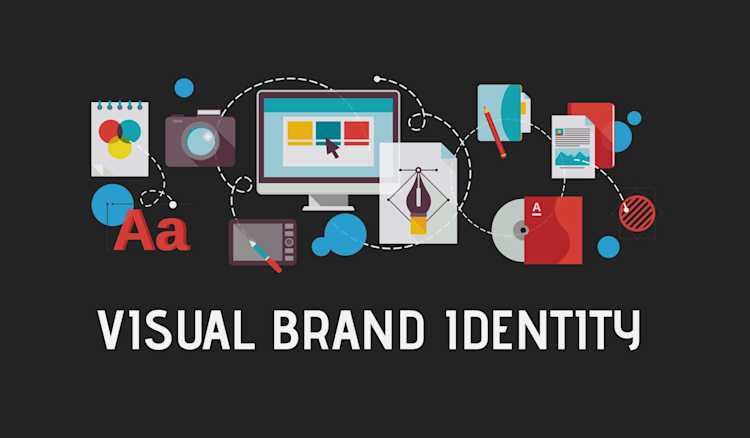When you are committed to offering meaningful value to your customers, it's a must to have a persuasive brand messaging framework. It's more than just a marketing tool: it's the backbone of how your audience perceives and interacts with your brand. Let's delve into understanding its importance, elements, and how to formulate the perfect brand messaging framework.
The Importance of A Strong Brand Messaging Framework
A brand messaging framework serves as a guiding document that enlivens your company's value proposition, mission, and core values.
Clarity and Consistency: It keeps your message clear and consistent across all platforms, thus enabling your brand to shine uniquely among competitors.
Connection with the Audience: A well-constructed message resonates with potential customers on an emotional level, helping to attract and maintain a loyal audience.
Guidance for Team Members: It serves as a guide for employees and content creators, enabling them to project a unified brand voice and foster brand identity.
Key Elements of an Effective Brand Messaging Framework
Every brand messaging framework consists of several vital components, each playing a unique role in resonating with your audience and driving your mission forward.
1. Value Proposition
The value proposition reflects the primary reason why a customer should choose your brand over competitors. It reveals your unique offerings that promise to solve a specific customer problem or fulfill a need.
2. Brand Pillars
These are the basis for your brand, detailing the services or features that convey the benefits promised in your value proposition. Each pillar has its own supporting messages that expound on the offerings' specifics.
3. Brand Promise
Your brand promise is a pledge you make to your customers about what they can expect from every interaction with your products or services.
4. Brand Story
The brand story is a narrative that spotlights your brand origins, mission, character, and target audience. Though it is typically a background component, it ensures the consistency of your brand identity.
5. Target Audience
Every brand messaging framework should explicitly state the brand’s target audience. Knowing who you are trying to reach aids in the personalized crafting of all your brand messages.
Constructing Your Brand Messaging Framework
Creating an effective brand messaging framework requires careful planning and detailed research. Follow the steps below to establish a captivating brand story that sets your business apart from the competition:
Step 1: Understand Your Brand
Before you can effectively communicate about your brand, you must first understand it. Consider your company's mission, vision, unique selling propositions, product benefits, and values.
2. Identify Your Target Audience
Identifying your target audience involves understanding their demographics, buying habits, needs, and wants. This information enables the formation of a personalized and effective brand message.
3. Define Your Brand Messaging Elements
With a comprehensive knowledge of your brand and its target audience, you can now define your value proposition, brand pillars, brand promise, and brand story. Ensure these elements are customer-centric and align with your business goals and values.
4. Create Your Tone of Voice
Your brand's voice is a reflection of your brand personality. It should align with your brand values, target audience, and the message you aim to convey.
5. Test and Refine Your Message
Lastly, it is essential to test your brand's message on different platforms and with diverse audience groups. Feedback from this testing phase will point out areas of improvement, ensuring that your final message is a polished symphony of words that hits all the right notes.
Frequently Asked Questions about Brand Messaging Framework
What are the Key Elements of a Brand Messaging Framework?
Key elements of a well-crafted brand messaging framework typically include a brand promise, brand voice, brand personality, unique selling proposition, and targeted market segments. It may also list communication goals, the emotional benefits for the customer, and key facts that support the brand's claims.
Why is a Brand Messaging Framework Important?
A brand messaging framework is crucial in establishing a strong, identifiable brand. It influences how your audience perceives your company and defines your unique market position. Developing a strong brand messaging framework ensures that all teams within your organization communicate a consistent and compelling message to your audience.
How to Develop a Brand Messaging Framework?
Developing a comprehensive brand messaging framework involves a series of steps. Firstly, understand your target audience's wants, needs, and problems. Next, define your brand's core values, personality, and what makes your product or service unique. Then, articulate your brand promise - the value or experience customers can expect to receive when interacting with your brand. Lastly, create a brand story that weaves all these elements together in a meaningful and emotional narrative.
Can a Brand Messaging Framework Evolve?
Yes, as your brand and market conditions evolve, your brand messaging framework should also adapt. For example, a profound product innovation, a significant shift in your target audience, or a rebranding initiative can warrant an update on your brand messaging framework. This is why regular reviews of your framework are essential to maintaining its relevancy and effectiveness.
What are the Common Pitfalls in Creating a Brand Messaging Framework?
Common challenges in creating a brand messaging framework include not sufficiently understanding the target audience, making the message too promotional instead of customer-centric, lack of consistency in communication, and failing to differentiate the brand from competitors. These issues can be avoided through thorough market research, thoughtful crafting of the framework, and constant application in all of the brand’s communication channels.
How to Know If Your Brand Messaging Framework Is Working?
The effectiveness of your brand messaging framework can be gauged by increased market awareness, improved brand perception, and growth in customer engagement and loyalty. These success indicators can be tracked through brand monitoring tools, social media engagement metrics, customer surveys, or feedback. Remember that results might not be immediate, and it takes time to build a strong, identifiable brand.
Who Should Be Involved in Creating a Brand Messaging Framework?
Creating a brand messaging framework is a collaborative process that should involve stakeholders from different areas of your business. This usually includes key decision-makers, marketing and communications, sales, and customer service teams. This helps ensure that all aspects of your brand are adequately represented in the message.
What's the Relationship between Brand Positioning and Brand Messaging Framework?
While they both form a critical part of branding strategy, brand positioning is about how you want to be perceived in the market and by your customers. It defines where you stand in relation to your competitors. On the other hand, a brand messaging framework communicates this positioning to your audience in a consistent, compelling, and concise way.
Why Should a Small Business Bother with a Brand Messaging Framework?
Even if you're a small business, a well-crafted brand messaging framework is crucial in setting you apart from your competitors and establishing a recognizable brand. It leads your marketing and communication efforts, aligns your team, helps attract your target audience, and fosters loyalty with your current customers.
How Much Time Does It Take to Develop a Brand Messaging Framework?
The process of crafting a brand messaging framework varies from one organization to another, depending largely on the company's size and complexity. It can take anywhere from a few weeks to a few months. This involves periods of brainstorming, market research, drafts and revisions, and internal reviews to ensure the framework accurately reflects the brand.
Pros of a Brand Messaging Framework
Provides Clarity, Consistency and Cohesion
Having a well-thought-out brand messaging framework gives your brand a consistent voice across various platforms and mediums. Consistency in messaging helps your audience to easily understand and remember your brand promise, values, and differentiation. This also ensures that different teams within your organization, be it communication, sales, customer support, or marketing, talk about your brand in the same way, using the same language, tone, and messaging guide.
Reinforces Brand Identity
It emphasizes who you are, what you stand for, and what makes you unique. A strong brand message communicates not just who you are, but also why that is important for the customers. It portrays your brand's commitment to a certain cause, mission, or value, helping you create an identity that resonates with your intended audience.
Facilitates Memorability
Repeated exposure to consistent brand messaging increases the likelihood of your brand being remembered by the audience. This is particularly important in a crowded market where brands are competing for the consumer's attention.
Assists in Achieving Marketing Goals
A brand messaging framework guides your marketing and communication efforts to align with your brand's mission, vision, and objectives. It provides a strategic map indicating how your business can communicate with your customers through content, advertisements, social media, emails, and other marketing channels.
Boosts Conversion Rate
Consistent, clear, and engaging brand messaging can trigger potential customers to move along your sales funnel, ultimately leading to higher conversion rates.
Enhances Customer Loyalty
Customers who identify and resonate with your brand message are more likely to remain loyal. Accurate and consistent brand messaging reinforces the value proposition to existing customers, thereby promoting customer loyalty.
Cons of a Brand Messaging Framework
Requires Significant Investment of Time and Resources
Creating a solid brand messaging framework is no easy task. It requires significant investment in research to understand your target audience, study market trends, and analyze competitors. It also needs effort to distill this data into clear, concise, and impactful messaging.
Periodic Review and Update
Marketing trends and consumer behavior constantly evolve. Because of these changes, organizations must periodically review and update their brand messaging framework. This continuous revision requires time and resources.
Challenges in Implementing Consistency
Achieving consistency in brand messaging across all channels and touchpoints can be a challenge, especially for large organizations with multiple teams and regions.
Difficulties in Cross-Culture and Multi-Lingual Applications
For global brands, translating and adapting the brand messaging framework to local languages and cultures can be difficult without losing its original essence.
Risk of Homogenization and Lack of Flexibility
Although a unified message can influence recognition and recall, there's a risk of homogenization whereby the brand loses its ability to adapt messaging in response to specific events, trends, or market conditions.
Misinterpretation and Confusion
Sometimes, despite best efforts, brand messaging may not be understood as intended by the audience. Factors such as cultural nuances and semantic differences can lead to misinterpretation or confusion.
Fear of Alienating Current or Potential Customers
In the quest to be distinctive, some brands adopt bold and unique messaging. While this can set them apart from competitors, it also carries the risk of alienating current or potential customers who do not resonate with such messaging.
Summary
A brand messaging framework is indeed a marketing game-changer. It's like a mirror that reflects your brand's identity in the market, being instrumental in creating consistent communication with your customers. This tool helps to craft inspirational and persuasive messages that align with the core values, objectives, and vision of a brand. So, if you want your brand to shine in the competitive commercial terrain, an effective brand messaging framework is a sure way to get there.
We can’t underestimate the power of a brand messaging framework when it comes to carving out a niche in the cluttered market landscape. It provides a scalable roadmap for all brand-oriented communication and ensures the brand's voice remains consistent and authentic across all channels and touchpoints. This DNA of the brand messaging ensures the customers align their perception about the brand accurately, boosting their trust and loyalty.
Despite the size of your business, investing time and resources in developing a brand messaging framework can yield significant dividends. It can navigate the brand throughout its lifecycle, maintaining its relevance in an ever-evolving market. It's like a magic potion that can infuse your brand communications with life, personality, and uniqueness. After all, who wouldn't want their brand to be heard, remembered, and loved?
About WebPerfex;
WebPerfex is a passionate and dynamic web design and SEO company based in the beautiful city of Roseville, CA. It's our mission to help your business reach its full digital potential through state-of-the-art website design and performance-boosting SEO practices. With a close-knit team of experts, we love to collaborate and innovate, providing you with high-quality services that align with your vision. We understand you're not just looking for an impressive website, but a powerful online presence that drives real results. That's why WebPerfex is the perfect partner to help navigate the digital landscape.




